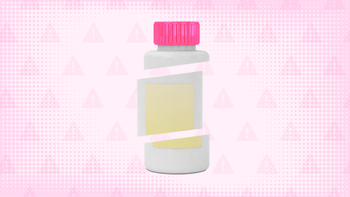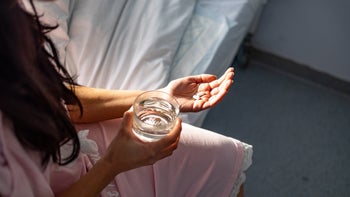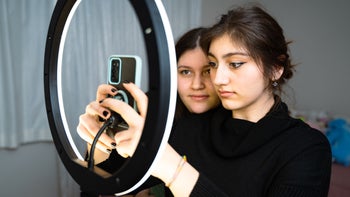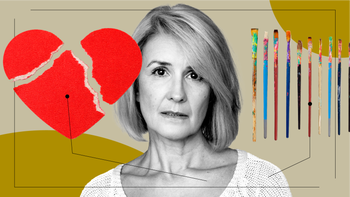
7 Signs Your Daughter Is About to Start Her Period
Key takeaways:
On average, most girls will have their first period at around 12 years old. Family history, environmental factors, and ethnicity could affect when the first period starts.
The first period usually occurs about 2 years after breasts begin to develop. Other changes in mood, energy level, and vaginal discharge can signal that menstruation is about to start.
Don’t be afraid to talk with your child about the changes taking place in their body, what they mean, and what they can expect when their period starts.
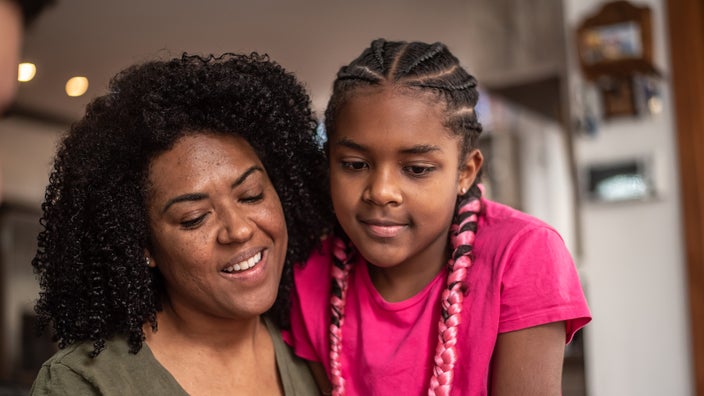
The start of the monthly menstrual cycle is a big adjustment for parents and daughters alike. It involves many physical and emotional changes, and is unfamiliar territory for an adolescent. The more information you can have to be prepared, the better off you both may feel. Here we’ll review the signs that your daughter may be about to start her period, so you’re not caught off guard when it happens.
We recognize that sex and gender lie in a spectrum. And much of the language here is centered on the terms girls, daughters, and women. We’re using these terms to refer to people assigned female at birth.
What is the average age when the first period starts?
Menarche, or the first menstrual period, begins between the ages of 10 and 16. On average, most girls will start to have their period around 12 or 13 years old. But this can vary. Factors that may influence at what age menstrual flow starts include:
Family history
Environmental factors
Ethnicity
BMI (body mass index)
In need of menopause symptom relief?
Get Premarin for over 55% less than the average retail price with GoodRx.

Keep in mind, periods can vary by length, frequency, and amount of flow. And it’s common to have an irregular pattern in the first few years. This often results in skipping months at a time or having a period flow a couple of times per month.
How do you know when the first menstrual period will start?
It’s impossible to know exactly when the first period will start. But, there are a few body changes that will happen leading up to the start of the menstrual period for the very first time. If you’re wondering what to expect, here are some clues that may help you know when a period is coming.
1. Growth spurt
There will often be a growth spurt about 1 year before the very first period. This is commonly due to an increase in the release of estrogen. The average amount of growth during this time is almost 11 inches (about 28 cm).
This isn’t the last time to expect a growth surge. Most people go on to grow another 2 inches after the first period starts.
2. Stomach complaints
Bloating is common when a period starts. There may be a feeling that the clothes are tighter leading up to menstrual flow. You may also notice a fuller look to the stomach. Common digestive signs that a period is on the way can include:
Diarrhea
Constipation
Abdominal cramping
Nausea
Read more like this
Explore these related articles, suggested for readers like you.
3. Mood changes
The shift in hormones that signal it’s time for the period to start can also cause mood changes. Some people become more tearful in the days or weeks leading up to the onset of menstruation. This irritability may last until the first few days into the start of flow.
Other mood changes might include:
More anxiety
Feelings of sadness
Irritability
Trouble sleeping
4. Fatigue
Your child might notice more fatigue than usual right before the period starts. It’s common to suddenly require more hours of sleep or not feel as rested with the usual sleep pattern.
Up to 40% of adolescents can feel sleepy normally. So this may not always be a reliable predictor of the first period.
5. Tender and fuller breasts
The first period typically begins about 2 to 3 years after the breasts start to develop. As the levels of estrogen rise, this can stimulate the breasts to increase in size. They can also become a bit tender. If the discomfort becomes severe, you can use ibuprofen to relieve symptoms.
6. Acne breakouts
With the hormonal changes of puberty, acne becomes more common. Rising testosterone levels may contribute to this. Right before the onset of each menstrual period, acne can also occur. This may affect up to 50% of females that have a monthly cycle.
7. Vaginal discharge
About 6 to12 months before the first period, vaginal discharge can appear. This is usually light, thin, and white without an odor. It’s often a result of the rise in estrogen during this stage of development.
What should I get for my daughter’s first period?
First of all, don’t panic. Take the time to talk with your child about the changes that are taking place and the steps that will be needed for each cycle.
There are many period product options for menstrual flow. Discuss each period product including how to use them correctly and safely according to the manufacturer’s instructions. Then you can decide which option your child is most comfortable with. Options include:
Tampons: Tampons soak up menstrual flow directly from the vagina.
Sanitary napkins: These are worn inside the underwear to collect period flow.
Period underwear: These look and feel like regular underwear but are sewn with special absorptive material to accommodate different levels of flow.
Menstrual cups: Menstrual cups are a reusable period product inserted in the vagina to collect blood.
It’s also important to teach your child how to track their cycles and provide a means to do so. This will help in becoming familiar with how the body works. Common ways to track the period include:
Phone apps
Digital calendars
Paper diaries
Following symptoms
Making a mental note
Using birth control
Talk with your healthcare provider for guidance on how to manage and prepare for your child’s first period. They can provide resources on how to make this a smooth transition for you and your child.
The bottom line
Most adolescents have their first menstrual period between the ages of 12 and 13 years old. It’s not possible to know the exact day the first period will start. But paying attention to signs like a growth spurt, breast growth, and vaginal discharge can help you start to prepare. Remember, your child’s first period will be a momentous time for you both. Talk with your healthcare provider about how you can best support your child through the process.
Why trust our experts?


References
Allen, B., et al. (2019). Physical development in girls: What to expect during puberty. Healthychildren.org.
American College of Obstetricians and Gynecologists. (2022). Your first period.
Bernstein, M. T., et al. (2014). Gastrointestinal symptoms before and during menses in healthy women. BMC Women’s Health.
Epstein, D. A., et al. (2017). Examining menstrual tracking to inform the design of personal informatics tools. Proceedings of the SIGCHI Conference on Human Factor in Computing systems. CHI Conference.
Eunice Kennedy Shriver National Institute of Child Health and Human Development. (2017). What are the symptoms of menstruation?
Findlay, S. M. (2008). The tired teen: A review of the assessment and management of the adolescent with sleepiness and fatigue. Paediatrics & Child Health.
Lacroix, A. E., et al. (2023). Physiology, menarche. StatPearls.
Limony, Y., et al. (2015). Age of onset of a normally timed pubertal growth spurt affects the final height of children. Pediatric Research.
Oller, B. (2023). Girls and puberty. Familydoctor.org.
Patel, K., et al. (2021). Acne vulgaris in teenagers. Contemporary PEDS Journal.
Stoll, S., et al. (2001). The effect of the menstrual cycle on acne. Journal of the American Academy of Dermatology.











